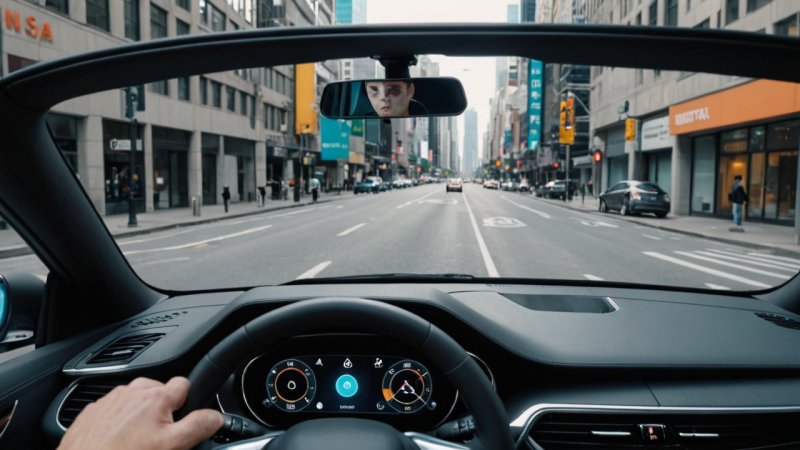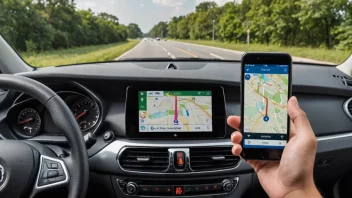In the ever-evolving world of automotive technology, one of the most innovative advancements is smart windshield technology. This groundbreaking feature is rapidly becoming a staple in modern vehicles, offering numerous benefits that enhance safety, comfort, and convenience for drivers and passengers alike. Smart windshields integrate advanced functionalities that not only provide essential information but also enhance the overall driving experience. In this article, we will explore the various aspects of smart windshield technology, its benefits, how it works, and its potential to revolutionize the way we drive.
What is Smart Windshield Technology?
Smart windshield technology refers to the integration of electronic systems and sensors into the vehicle's windshield. These systems can provide real-time information to the driver, enhance visibility, and even interact with other smart devices in and around the vehicle. The technology employs advanced optics, augmented reality (AR), and connectivity features to create a seamless interface between the driver and their vehicle.
Key Features of Smart Windshields
- Heads-Up Display (HUD): A common feature in smart windshields, HUD projects important information such as speed, navigation directions, and alerts directly onto the glass, allowing drivers to keep their eyes on the road.
- Augmented Reality Navigation: AR technology can overlay navigation cues on the real-world view, making it easier for drivers to follow directions without distraction.
- Adaptive Light Control: Smart windshields can automatically adjust the tint or opacity to reduce glare from the sun or oncoming headlights, improving visibility during various driving conditions.
- Integrated Sensors: These windshields can include rain sensors, temperature monitors, and collision warning systems to enhance safety and convenience.
- Connectivity: Smart windshields can connect to smartphones and other devices, allowing drivers to access apps, music, and notifications hands-free.
Benefits of Smart Windshield Technology
The integration of smart windshields offers numerous benefits that cater to the needs of modern drivers. These benefits can be categorized into safety, convenience, and comfort.
1. Enhanced Safety Features
Safety is a primary concern for any driver. Smart windshields contribute to safer driving in several ways:
- Collision Avoidance: By integrating sensors that detect obstacles and hazards, smart windshields can provide alerts to the driver, potentially preventing accidents.
- Improved Visibility: Features like adaptive light control and defogging capabilities ensure that the driver has clear visibility at all times, regardless of weather conditions.
- Real-Time Alerts: Smart windshields can notify drivers of potential threats, such as lane departures or blind-spot obstructions, enhancing situational awareness.
2. Increased Convenience
Smart windshields make the driving experience more convenient in several ways:
- Hands-Free Operation: With voice commands and connectivity to smartphones, drivers can manage calls, navigation, and music without taking their hands off the wheel.
- Easy Navigation: Augmented reality navigation overlays allow for intuitive route guidance, making it easier to follow directions without constantly checking a separate device.
- Customizable Displays: Drivers can personalize the information displayed on their windshields, ensuring that they see the most relevant data for their needs.
3. Enhanced Comfort
Comfort is not often the first thing that comes to mind when discussing technological advancements in vehicles, but smart windshields play a significant role in this aspect as well:
- Temperature Regulation: Smart windshields can help maintain a comfortable cabin temperature by automatically adjusting to external conditions.
- Reduced Eye Strain: By minimizing glare and optimizing visibility, these windshields can help reduce eye strain during long drives.
- Enhanced Aesthetics: Many smart windshields are designed with sleek, modern aesthetics that enhance the overall look of the vehicle.
How Smart Windshields Work
Understanding the technology behind smart windshields can help appreciate their functionality. Here’s a breakdown of how these systems operate:
Optical Technology
Smart windshields utilize advanced optics to project information onto the glass surface. The HUD feature typically involves a mini projector that displays data onto a special film embedded within the windshield, allowing it to be visible without obstructing the driver's view.
Sensor Integration
Various sensors are integrated into smart windshields to enhance their functionality. These may include:
- Camera Systems: Cameras can be used for lane detection, collision warnings, and traffic sign recognition.
- Environmental Sensors: Sensors that detect rain, temperature, and light conditions help adjust the windshield's features accordingly.
- GPS and Connectivity Modules: These allow the windshield to connect with the vehicle’s navigation system and external devices for real-time updates and communication.
Challenges and Considerations
While smart windshield technology offers significant advantages, several challenges and considerations must be acknowledged:
Cost
Integrating smart technology into vehicles can be costly. While prices may decrease as the technology becomes more widespread, it may still be a barrier for budget-conscious consumers.
Technology Dependence
Increased reliance on technology can create issues if systems fail. Drivers must remain attentive and not solely depend on smart features to ensure safety.
Privacy Concerns
With connectivity comes concerns about data privacy. Drivers must be aware of what data is being collected and how it is used.
Future Trends in Smart Windshield Technology
The future of smart windshield technology is promising, with several trends expected to shape its evolution:
- Increased Integration with Autonomous Vehicles: As autonomous driving technology advances, smart windshields will play a crucial role in providing real-time data to both the vehicle and the driver.
- Enhanced AR Applications: Future developments may lead to more sophisticated AR applications, providing more interactive and informative displays.
- Sustainability Innovations: Advances in materials and energy efficiency may lead to eco-friendly smart windshields that are both functional and sustainable.
Conclusion
Smart windshield technology represents a significant leap forward in automotive innovation, offering a blend of safety, convenience, and comfort for drivers. By integrating advanced features such as heads-up displays, augmented reality navigation, and sensor technology, smart windshields have the potential to transform the driving experience. As this technology continues to evolve, it will undoubtedly become an essential component of modern vehicles, paving the way for a safer and more connected future on the road. Understanding these benefits and capabilities allows consumers to make informed decisions about their automotive technology choices, ensuring they can take full advantage of what these innovations offer.






